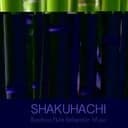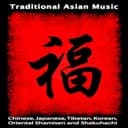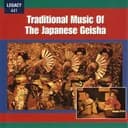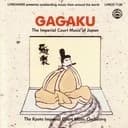Historical Foundations and Traditional Japanese Context
The hirajoshi scale pattern represents a cornerstone of traditional Japanese music theory, with documented usage extending back to the Edo period (1603-1868) in court music, temple ceremonies, and folk traditions. Bb Hirajoshi maintains the authentic interval pattern (2-1-4-1-4 semitones) that defines this pentatonic tuning system, creating the characteristic "Japanese sound" recognized globally in anime soundtracks, meditation music, and world music fusion projects. Traditional Japanese instruments like the 13-string koto, shakuhachi bamboo flute, and shamisen three-string lute frequently employ hirajoshi tuning, though historically in different pitch centers depending on regional traditions and instrument construction. The transposition to Bb makes this scale particularly accessible for modern Western instruments—Bb clarinets, trumpets, tenor saxophones, and other Bb-transposing instruments can explore authentic Japanese melodic vocabulary in their natural reading key. Unlike Western scales like Bb Major or Bb Natural Minor that emphasize harmonic functionality and chord progressions, Bb Hirajoshi creates modal, meditative soundscapes where melodic development takes precedence over harmonic movement. Contemporary preservation efforts by Japanese cultural organizations ensure hirajoshi tuning remains vital to both traditional performance practice and innovative modern adaptations.
Distinctive Sonic Character and Emotional Expression
Bb Hirajoshi produces a contemplative, introspective atmosphere characterized by its minor third (Db) and flattened sixth (Gb), creating melancholic beauty distinct from Western minor tonalities. The scale's large interval leaps—particularly the major third between Db and F—generate the characteristic "gapped" quality typical of Japanese pentatonic scales, distinguishing it fundamentally from smoother Western pentatonic structures. This intervallic architecture evokes images of zen meditation gardens, traditional tea ceremonies, ancient temples shrouded in mist, and cherry blossoms drifting in spring winds—making Bb Hirajoshi invaluable for film composers, meditation music producers, and world music artists seeking authentic Japanese emotional resonance. The absence of semitone intervals (except between C and Db) eliminates Western leading-tone tension, allowing melodic phrases to float suspended without harmonic resolution expectations. Musicians describe Bb Hirajoshi's quality as "wistful," "quietly beautiful," and "peacefully melancholic"—perfect for ambient compositions, yoga soundtracks, spa music, and moments requiring gentle introspection. The scale's pentatonic nature (five notes per octave) means virtually any note combination produces consonant results, encouraging melodic experimentation while maintaining authentic East Asian character. Compared to Western scales, Bb Hirajoshi offers modal stability without functional harmony, creating space for sustained contemplation rather than directional chord movement.
Practical Applications in Contemporary Music Production
Contemporary composers extensively employ Bb Hirajoshi in anime soundtracks (Studio Ghibli films frequently feature hirajoshi-based themes), video game music (particularly role-playing games set in Japan-inspired fantasy worlds), and meditation/wellness applications where its calming pentatonic structure creates peaceful atmospheres without harmonic tension. The Bb transposition proves especially valuable for wind ensemble arrangements, brass quintet compositions, and jazz settings where Bb instruments dominate—tenor saxophonists, trumpeters, and clarinetists can explore authentic Japanese melodic vocabulary without complex transposition. Film and television composers rely on Bb Hirajoshi to instantly establish Japanese cultural settings; a few notes immediately transport audiences to Tokyo's neon streets, Kyoto's historic temples, or rural Japanese landscapes. Electronic music producers incorporate hirajoshi in lo-fi hip-hop beats, chillwave productions, and ambient techno, where its pentatonic simplicity provides melodic interest without harmonic complexity. The scale functions effectively over sustained Bb minor or Bb major drone tones, and its five-note structure creates accessible, memorable melodic fragments that sound authentically Japanese without requiring advanced knowledge of traditional performance practices. Jazz musicians exploring modal improvisation use Bb Hirajoshi for exotic color, often juxtaposing it against Western scales or incorporating it into fusion compositions that bridge Eastern and Western musical traditions.
Comparison to Related Japanese Scales and Western Alternatives
Understanding Bb Hirajoshi's relationship to other pentatonic scales clarifies its unique position in global music theory. While Bb Minor Pentatonic (Bb-Db-Eb-F-Ab) emphasizes blues-rock vocabulary with its flattened third, fourth, fifth, and seventh degrees, Bb Hirajoshi substitutes C and Gb for Eb and Ab, fundamentally transforming the melodic character from Western blues to Eastern contemplation. The major second (C) and unusual flattened sixth (Gb) create melodic possibilities impossible within Western pentatonic frameworks—these specific interval relationships produce the scale's signature Japanese identity. Transposing hirajoshi to Bb maintains absolute fidelity to the traditional interval pattern while accommodating modern Western instrumentation and ensemble contexts. Musicians familiar with other Japanese scales can compare Bb Hirajoshi to related tuning systems: the In scale offers brighter major qualities, the Iwato scale creates darker, more dramatic atmospheres, and the Kumoi scale provides yet another distinct Japanese pentatonic alternative. Each serves specific emotional and cultural purposes within traditional Japanese music theory. The relationship between Bb Hirajoshi and Bb Major illustrates fundamental differences between Western functional harmony and Eastern modal approaches—where Bb Major implies chord progressions, cadences, and harmonic direction, Bb Hirajoshi suggests sustained modal exploration, meditative repetition, and melodic development divorced from harmonic functionality.





